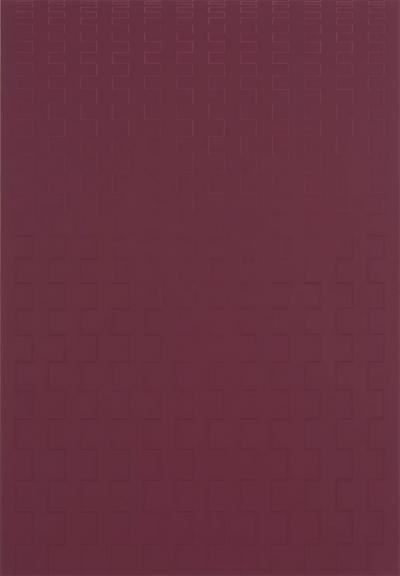Across the Generations. Polish Art in Marl 6th March to 12th June 2016
Mediathek Sorted




![ill. 5: Alina Szapocznikow: Fajrant [At the End of the Working Day] ill. 5: Alina Szapocznikow: Fajrant [At the End of the Working Day] - Rubber glove, polyester, brush. 26 x 18 x 15 cm, Museum Jerke, Bochum.](/sites/default/files/styles/width_100_tiles/public/assets/images/5_alina_szapocznikow.jpg?itok=I4t5lqAF)


























Waśko, who was born in Nysa in 1947, had already had solo exhibitions in the Bochum Galerie m (founded in 1968 by Alexander von Berswordt-Wallrabe as a gallery for new concrete art, photography, film and video). In 1977 he also showed his work at the documenta 6 in Kassel. For the exhibition, Waśko made a personal selection from a series of photos, texts and schematic portraits in the gallery’s stocks, entitled “Four-Dimensional Photography“ (or to give it its full title: “A theory of a four-dimensional photography – the empirical photographic/verification /proof/ of the permanence of a time-space section”, 1972, ill. 12). He also showed two series of ink and pencil drawings, “Hypothetical Photography” (1978) and “Hypothetical Film” (1979), which also dealt with the assignation of photography and film to a space, and showed the artist’s transition to concept art.
In 1983, in the third year of martial law in Poland, Waśko emigrated to England before finally moving to Germany when he was awarded a DAAD grant to pursue his work in Berlin. Till 1990 he taught at places like the Kunstakademie Düsseldorf, the Hochschule für Gestaltung in Offenbach am Main, the Universität der Künste in Berlin and the Folkwang Universität der Künste in Essen. His solo exhibitions include one in 1984 in the Kunstverein in Kassel and another in 1986 im the Neuer Berliner Kunstverein. In addition he has taken part in a huge number of group exhibitions in Germany and during this time made a name for himself as a painter. Four of his paintings were exhibited in the exhibition. These included “Black Film No. 3” (ill. 13) and “Yellow Film No. 1” (both 1983, ill. 14), in which he turned abstracted film strips into surface compositions. His abstract paintings “Dark into Light 2” (1987, ill. 15) and “Black to White/Holistic Painting” (1988, ill. 16) hark back to the tradition of Polish constructivism as practised by the Blok group with Katarzyna Kobro and Władysław Strzemiński: they show rhythmically meandering strips in a scarcely perceptible relief. The floor sculpture “Time Sculpture at Black Paint” (1986), that was shown in the exhibition at the Skulpturenmuseum Glaskasten Marl (ill. 17), also portrays 35mm film strips against an area of black in an extremely fine relief; these are broken up by red rods at rhythmic, chronological intervals, thereby transferring the temporal phenomenon of film into three-dimensional sculpture. From 1990 to 1992 Waśko was the programme director at the P.S.1 Museum and Institute of Contemporary Art (now MoMA PS1) in New York. From 1993 to 2008 he was active in various functions in Łódź including, in 1990, the post of president of the International Artists' Museum, which he co-founded. Since 2008 he has been living once again in Berlin.
Wilhelm Sasnal was born in 1972 in Tarnów, where he still lives and works. In the exhibition he was one of the leaders of the younger generation of artists who were born in the 70s and 80s. He was basically a painter from the Academy of Pictorial Arts in Kraków (Akademia Sztuk Pięknych im. Jana Matejki w Krakowie), but during the time he was a member of the Ładnie artists’ group (until 2001) his paintings were occasionally categorised as “banal pop”. He describes himself as a realist with a strong interest in objects and the media of his (respectively our), time. Sasnal had two paintings from the Werner Jerke collection in the exhibition: “Sound Tape Reels”, (1999, ill. 18) and “Man with Child” (2001, ill. 19). His works link media and the pictorial arts in a similar fashion to those of the older generation artist, Waśko. That Sasnal feels duty-bound to uphold the traditions of Polish art – in this sense he is a link between the older and younger generations – is shown by his latest video film “Developing Tank” (2015), a loan from the Berlin Johnen Galerie. The story features the protagonist and his dead father on a search for an undeveloped film. It unfolds in a confusing mix of biographical and historical references, present, past and fiction. Sasnal confronts his research into light (not only as a medium of film development) and its meaning in historical sequences, ending with the story of Władysław Strzemiński who, in 1948/49 transposed optical impressions of sunlight into abstract compositions. Whilst the son in the final workshop scene studies a book on Polish constructivists (ill. 20), the father is shown painting in the place he stores his paintings.





















































































